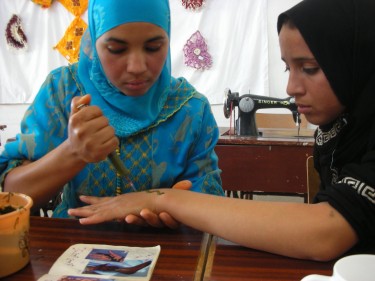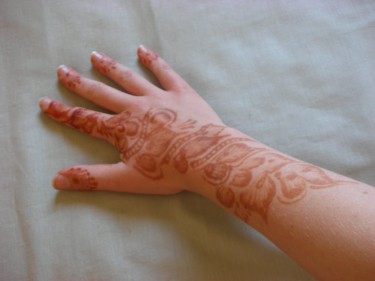Henna as an art form has existed for thousands of years. Found from Morocco to Bangladesh, henna is used to dye the hair and decorate the body. In Morocco, henna is used to decorate the hands and feet with intricate patterns, and to tint the hair at the hammam.
Recently, a new book documenting the ancient art of henna was released. The book, entitled “Moor: A Henna Atlas of Morocco,” contains illustrations and photographs of the beautiful Moroccan version of the art form. A sneak peek:
The book's authors also have a blog, entitled Moor Henna.
Peace Corps volunteer Emily (Emily and Jon in Morocco) recently experienced henna firsthand. On the blog, she posts photographs of henna being applied at the artisana where she works:
Emily also posts a photograph of her own arm, post-henna:
Of the experience, Emily says:
When I got home I dabbed the dried henna with some olive oil before peeling it off. The girls told me to just use vegetable oil (probably because it's cheaper), but I opted for the good stuff. I think the oil is supposed to help the henna “set,” but it also just feels nice on the skin because the dried henna doesn't feel that great. when the henna first comes off it's bright yellow, then darkens up over the next several hours. By today it was a nice brown color.








